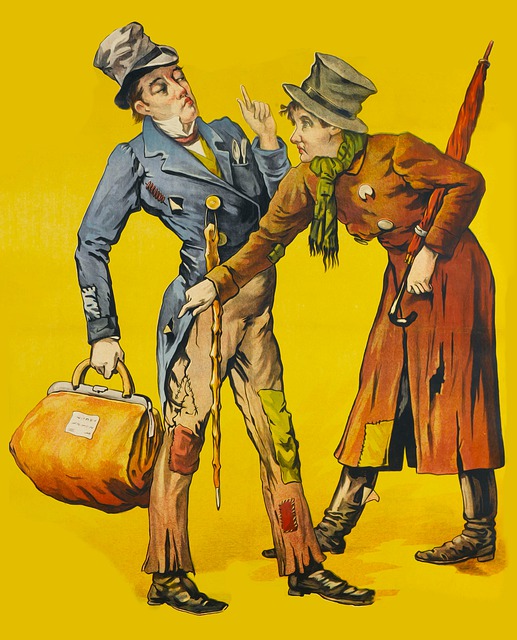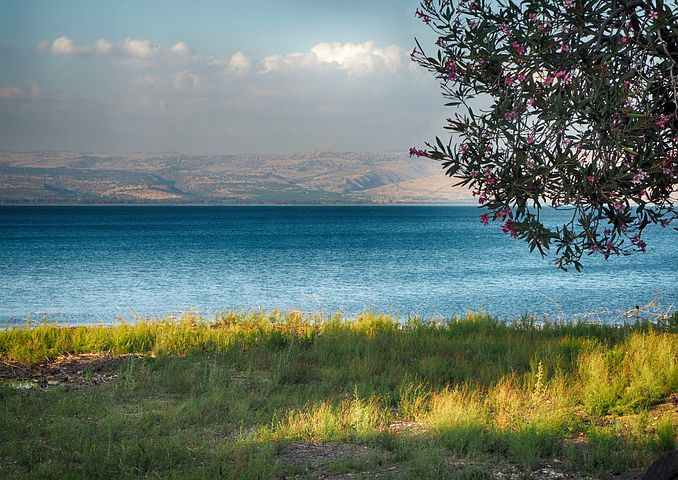One Last Ride – and Three Pints of Blood
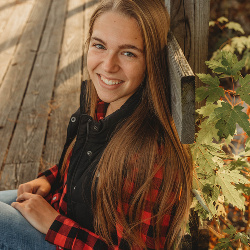 A dark and snowy night.
A dark and snowy night.
January 15, 2024. A new snow settles in the Shenandoah Valley. Karla, an EMU student, is sledding with friends on a hill on the EMU campus. She’s an English major and a setter for the varsity volleyball team, nearly at the top of her game.
At 9PM, she decides to take one more ride down the hill. Karla gets to the bottom of the hill and collides with a signpost. She catches the post on her left side, shattering her spleen and significantly damaging her left kidney. Friends turn her on her side and hold back her hair as her vomit splatters across the white snow. One of them calls 9-1-1 and then Jill, Karla’s mom. The squad arrives shortly and takes her to the local hospital.
By now, heavy snow is falling. Doctors decide to transfer her to the UVA trauma department. What normally takes 60 minutes becomes a 2 ½ hour ride. Snow and fog are covering the mountain, creating poor visibility. The ER doctor tells the paramedic to keep Karla’s systolic blood pressure above 90. The ride to UVA is tense as the driver fights treacherous roads, fog, and blinding snow and Karla’s blood pressure dips to 60. While the driver battles road conditions, the paramedic fights for Karla’s life, manually hand-squeezing two units of blood into Karla’s body – and watches her systolic blood pressure rise.
the ir lab
The ER doors at UVA open as the ambulance pulls in, lights flashing. Throughout the night Karla is stabilized and prepped for a procedure in the IR lab. Doctors will do a proximal splenic artery embolization to address the Grade 5 spleen laceration. A recanalization and stenting of the left renal artery stabilizes the kidney. Both procedures are completed intravenously.
The prognosis of the kidney, without blood flow for nearly twelve hours, is unknown. Several doctors caution against hope. An army of prayer warriors steps up to support Karla in prayer.
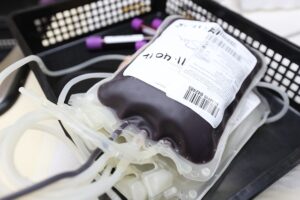 Another unit of blood
Another unit of blood
Karla recovers in the intensive care unit. The access port to her femoral artery re-opens and she loses a unit of blood before the bleed is under control. Over the next several days, her platelet count drops lower – a combination of the accident and the bleed. Karla receives a third unit of blood.
The next day, Karla is moved to intermediary care. Her pain is minimal, and she is now allowed regular food as tolerated. Karla is hungry, but nauseated, and anything she eats comes back up.
On January 21, six days following the accident, Karla is discharged home. Recuperation and recovery, while slow, follow. She is still nauseated with no appetite. Doctors say the likely cause is trauma to the body and hemorrhagic blood still in her abdomen. The body needs time to absorb that blood.
The light in her eyes is gone; her cheeks are pale. Nausea, pain, weakness, and weight loss contribute to her pallor. Her family is concerned, but nothing entices her to eat more than a few bites at a meal. She vomits and dry heaves constantly.
AFTER BLOOD, GUT HEALING
Grandma comes the next week. She gets busy in the kitchen, baking muffins, cinnamon rolls, and homemade bread. Karla – who has refused most food – inhales the aroma from the kitchen and ventures out to take a few bites, then more. Grandma’s baking settles her gut! Gradually, Karla’s strength returns.
February 23, Karla and Jill arrive at the hospital for follow-up testing. The verse from Psalm 139 comes to Jill’s mind: “For You created my inmost being. You knit me together in my mother’s womb.” For ninety minutes, the ultrasound technician takes images of every angle of both kidneys.
“All I could think,” Jill says, “was, ‘Lord, You knit her together once before, please do it again’.” And He did.
There are cheers all around! Her team of doctors is thrilled and slightly bewildered. Karla’s family is grateful for the exceptional care and decision made to save Karla’s kidney. They are reminded many times that day, and by multiple physicians, that Karla’s injuries were serious.
While Karla is cleared for physical activity, she is not cleared for contact sports (including volleyball) until three months post-surgery. Karla’s current dual antiplatelet therapy makes her vulnerable to internal bleeding. There will be a lifelong regime of blood thinners and annual ultrasounds. Manageable, indeed.
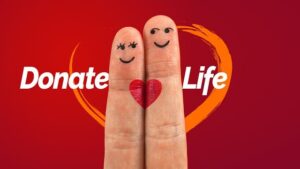 restoration and return
restoration and return
Spring is here. Karla’s kidney function is normal! The light is back in her eyes; color has returned to her cheeks; the bounce is back in her step. Each day is a miracle, and each moment brings more healing.
It is March, two months since the sledding accident. There have been many fears, a plethora of questions, a wealth of prayers, and an abundance of tears since that sled ride down the hill that changed Karla’s life. She and her family are grateful for the outpouring of love and care from her community. They are grateful for the doctor who took a chance to save her kidney and her life.
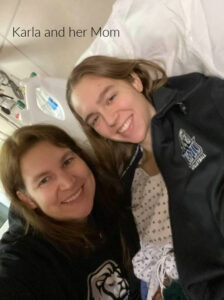 Her family is also grateful for the many blood donors who took an hour of their time one day to donate a pint of blood. Blood cannot be manufactured. The only way to receive blood is for someone to first give. Karla is grateful someone gave.
Her family is also grateful for the many blood donors who took an hour of their time one day to donate a pint of blood. Blood cannot be manufactured. The only way to receive blood is for someone to first give. Karla is grateful someone gave.
When Karla needed blood as the rescue squad sped through packed snow across the Blue Ridge mountains toward Charlottesville, when a paramedic manually squeezed two bags of blood into her veins to stabilize her blood pressure, and when doctors called for more blood following the procedure, blood was there – thanks to donors nationwide.
We never know when one of us – or someone we love – will need blood. This is why we should give blood when we can. There is no better time than today.
If you are unable to donate blood, support someone who can. Find a way to help those who give. Support local blood drives!
Help put the light back in someone’s eyes. Help put back the bounce in somebody’s step. You can save a kidney – and a life.
You never know: the life you save may belong to someone you know.

Mor information
March is Red Cross month. Since WW II, every American president has designated March as Red Cross month. “Our annual celebration of turning compassion into action.”
Credits:
- Jill Hostetter, Karla’s mom, who provided information for this article and photos.
- Pixabay.com: photos by Ahmad Ardity and Gerd Altman




